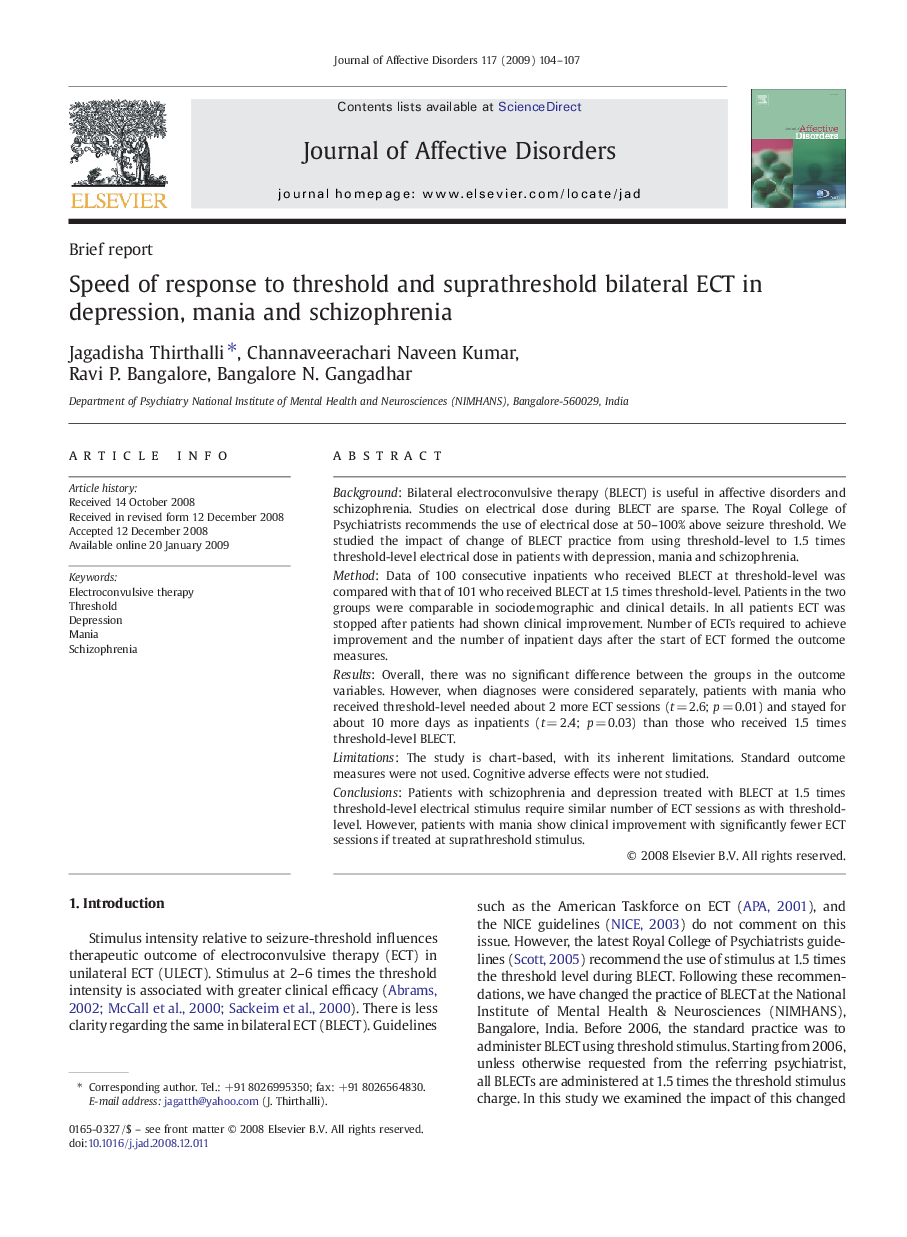| Article ID | Journal | Published Year | Pages | File Type |
|---|---|---|---|---|
| 4187250 | Journal of Affective Disorders | 2009 | 4 Pages |
BackgroundBilateral electroconvulsive therapy (BLECT) is useful in affective disorders and schizophrenia. Studies on electrical dose during BLECT are sparse. The Royal College of Psychiatrists recommends the use of electrical dose at 50–100% above seizure threshold. We studied the impact of change of BLECT practice from using threshold-level to 1.5 times threshold-level electrical dose in patients with depression, mania and schizophrenia.MethodData of 100 consecutive inpatients who received BLECT at threshold-level was compared with that of 101 who received BLECT at 1.5 times threshold-level. Patients in the two groups were comparable in sociodemographic and clinical details. In all patients ECT was stopped after patients had shown clinical improvement. Number of ECTs required to achieve improvement and the number of inpatient days after the start of ECT formed the outcome measures.ResultsOverall, there was no significant difference between the groups in the outcome variables. However, when diagnoses were considered separately, patients with mania who received threshold-level needed about 2 more ECT sessions (t = 2.6; p = 0.01) and stayed for about 10 more days as inpatients (t = 2.4; p = 0.03) than those who received 1.5 times threshold-level BLECT.LimitationsThe study is chart-based, with its inherent limitations. Standard outcome measures were not used. Cognitive adverse effects were not studied.ConclusionsPatients with schizophrenia and depression treated with BLECT at 1.5 times threshold-level electrical stimulus require similar number of ECT sessions as with threshold-level. However, patients with mania show clinical improvement with significantly fewer ECT sessions if treated at suprathreshold stimulus.
